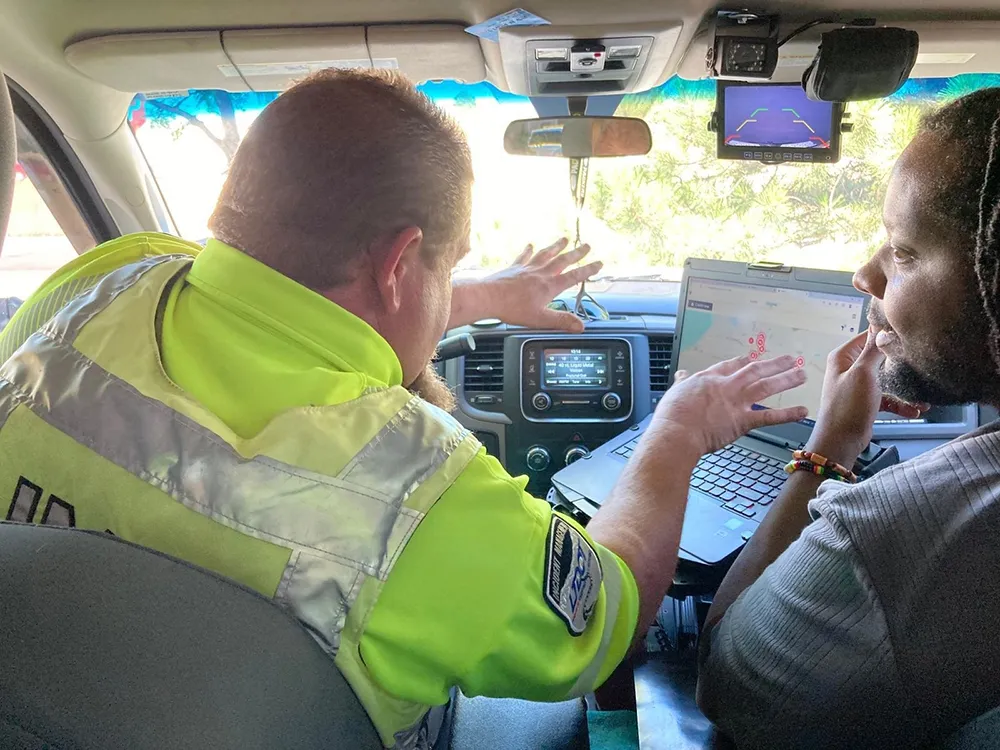
John Kendall considers the public’s awareness of the benefits of ITS.
While the results of developing ITS technology may be clear to readers of ITS International, there is far less evidence that drivers have any appreciation of what the technology is doing for them. So how aware are drivers of the developments that are designed to make their journeys less congested and safer?
“I think the first thing to say is that if you talk to most motorists about Intelligent Transport Systems, they probably won’t know what you’re talking about,” says David Bizley, chief engineer at the RAC in the UK. “On the other hand, they are clearly well aware of some systems. People who drive on motorways are very well aware of variable speed limits. They come with speed enforcement cameras, but I think there is a reasonable understanding actually, certainly amongst regular users, that they are better off in terms of reduced congestion on ‘managed’ motorways than without.”
But it’s a different story where city systems are concerned reckons Bizley, “I think if you asked [drivers] about the equivalent technology in cities, they just about know that traffic lights are sequenced. I don’t think they have any idea of the level of sophistication that goes into varying the timing and the intervals and the things that the more sophisticated city centre systems do to keep traffic flowing.”
Bizley thinks that this may be because more effort has been put into informing motorway users about the UK motorway systems and agrees that this might be because the overhead gantry signs used on motorways can also be used to give explanations to road users, whereas there are no equivalent signs available in city traffic systems. “If you’ve got something as visible as the gantry sign, the variable speed limit – the enforcement technology, then you have to then explain it to people, they’re not stupid – they will want to know.”
Credibility of data is seen to be an issue. “That is an issue that comes up very regularly”, says Bizley, “Generally, I think that people are quite enthusiastic about the journey time estimates displayed. They are pretty accurate and we get good feedback on them. The issues tend to be about the warning of an incident that has cleared by the time you get there.”
Professional drivers
Professional drivers and large commercial fleets can be better informed about the merits of ITS but are equally aware of the limitations, according to Malcolm Bingham, head of Road Network Management Policy for the UK-based
“There is data out there and a lot of it, which is the first problem. How do you make that relevant to the operators? In addition to that, we know that a lot of the data that is in place is either inaccurate or could tend to be inaccurate and I think that is the first hurdle that we have to overcome. We recognise that ITS in itself can give benefits, but not with poor data.”
Improving the quality of the data, particularly on a forecast basis is something that the FTA thinks would be very useful. “We know that some of our very big members have been caught out with roadworks that they didn’t know were going to happen. That can be very expensive – not just in having the vehicle standing still and on the larger vehicles we estimate that purely on the operating costs that would be about £1 [US$1.48] per minute, per vehicle.
“It also goes further than that. If they miss deliveries, they are likely to incur penalty charges, or they may simply be in breach of their contract. Then they may have to reschedule a fleet to make sure the deliveries can be made. That’s why it is crucial to get that forecast data better than it currently is.”
Bingham highlights other issues. In the UK, as in other regions, the national
Wider public
David Bizley at the RAC highlights another issue that is similar to this, relating to smart motorways, where warnings might have been given too far in advance, “They start announcing an obstruction so far in advance that drivers in many instances have moved out the way to avoid it, then by the time they have got to it, they have given up and returned to the lane that is supposed to be obstructed, so I think there’s a bit of fine tuning required.” This relates particularly to motorways where overhead signs are used to indicate where lanes are obstructed, without physically closing those particular lanes.
Bizley’s opening comment is echoed by Maxime Flament, head of sector –SafeMobility at
He takes the example of speed cameras, “They are seen negatively, perhaps, although sometimes positively by the wider public.
Drivers see the personal impact of fines, whereas they don’t know how much these speed cameras have contributed to safety and traffic flow.”
Flament gives examples of how information about ITS is used to engage with drivers. For instance, gathering data on road traffic accidents may help drivers to understand why such systems are being used. “Yearly updates on the number of fatalities on the roads are things that you see in the mass media and these may be linked to some kind of intelligent transport system.” He gives the example of how in recent years the use of speed cameras in France helped to reduce the number of road fatalities in one year by 3,000, a reduction of almost 40%. “This helped to make people aware that this was not just done to increase the income from fines, but to improve safety for the general public.”
Flament includes onboard systems designed to improve safety as well as external traffic management systems.
Vehicle legislation and schemes such as the European New Car Assessment Programme (Euro-NCAP) and its equivalent in Australia/New Zealand (ANCAP), Latin America (Latin NCAP) and China (C-NCAP) have helped to ensure that more vehicles are fitted with these active safety systems. Because these NCAP scores are widely reported and reward cars fitted with these systems, drivers are more aware of them.
Flament includes autonomous emergency braking systems, forward collision warning, lane departure warning and road sign recognition systems as well as active cruise control.
From a consumer point of view, he does not think that the main motivation for buying these systems is to contribute to improved safety or traffic flow, but rather to improve comfort, avoid congestion and reduce fines.”
David Bizley at the RAC thinks that there is awareness among drivers of what technologies such as automatic number plate recognition (ANPR) systems can provide - an understanding of where a vehicle is being driven and when.
“There’s a bit of a concern about that,” he says, “but I think there’s also a recognition that this may well be used to support tolling systems and other means of managing where and when you drive.”
He goes further, saying: “We have very little evidence that they understand the true concept of the connected car. From [the drivers’] point of view, it’s increasing intelligence in terms of the vehicle itself, in terms of braking, acceleration, parking and navigation. I don’t think they perhaps understand how vehicles will communicate with one another and the outside world to help better manage the whole network.
“We don’t have a policy of specifically trying to educate our members, but we try to provide them with information that they will find interesting or relevant.” As an example, Bizley says that there is information on the RAC website about the different types of managed motorway and how these differ from one another and also what to do if you break down on one. It is difficult to escape the conclusion that the car companies are doing a better job at marketing the benefits of their technology to motorists than the ITS sector.










